History of the Chef’s Table
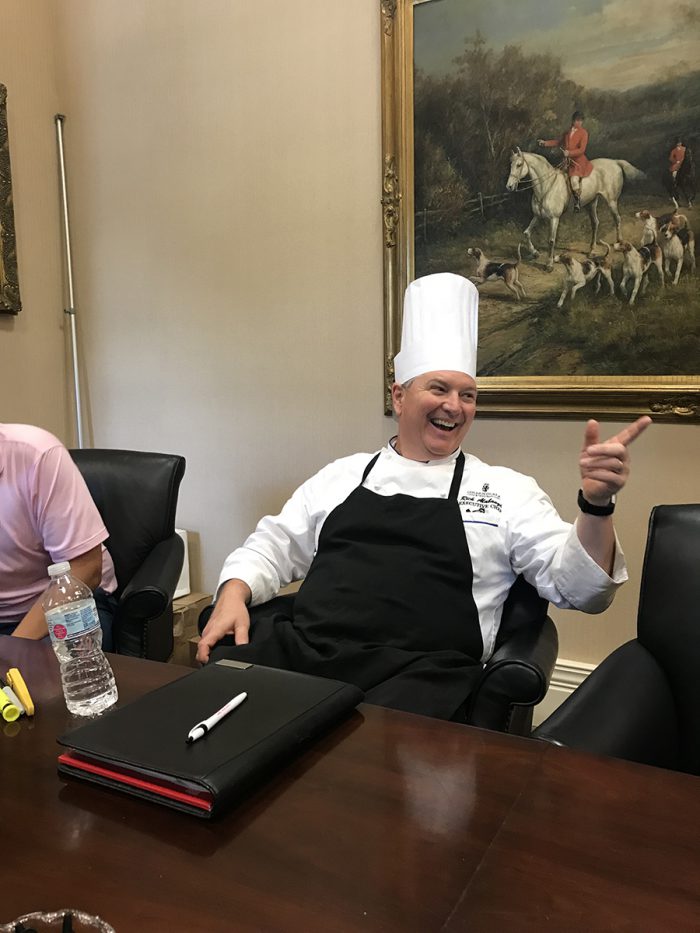 In the 1800s, Chef Oscar Tschirky was king of the kitchen at the Waldorf Astoria — making headlines for his veal Oscar, eggs benedict, Waldorf salad and Upstate New York farm. While headlines have certainly changed in the past 125 years, the picnics hosted on that farm and the food served during those picnics became a revolution turned tradition for future chefs and the way they now capitalize on dining experiences — now called the chef’s table. One such chef of the future is Rick Alabaugh of Golden Ocala Golf & Equestrian Center.
In the 1800s, Chef Oscar Tschirky was king of the kitchen at the Waldorf Astoria — making headlines for his veal Oscar, eggs benedict, Waldorf salad and Upstate New York farm. While headlines have certainly changed in the past 125 years, the picnics hosted on that farm and the food served during those picnics became a revolution turned tradition for future chefs and the way they now capitalize on dining experiences — now called the chef’s table. One such chef of the future is Rick Alabaugh of Golden Ocala Golf & Equestrian Center.
Long before Chef Rick and his team were serving up course after course and calling it a chef’s table experience, Oscar of the Waldorf was demonstrating how his famous meals were made for family, friends and colleagues. Simply put, a chef’s table is an area in a chef’s kitchen where guests observe the preparation of a preplanned meal before tasting it. So, while Oscar’s part in the origination of the chef’s table is legend at this point, to Chef Rick and others like him, it’s a reason to continue to perfect the experience and what foodies get out of it.
Modern-Day Chef’s Table
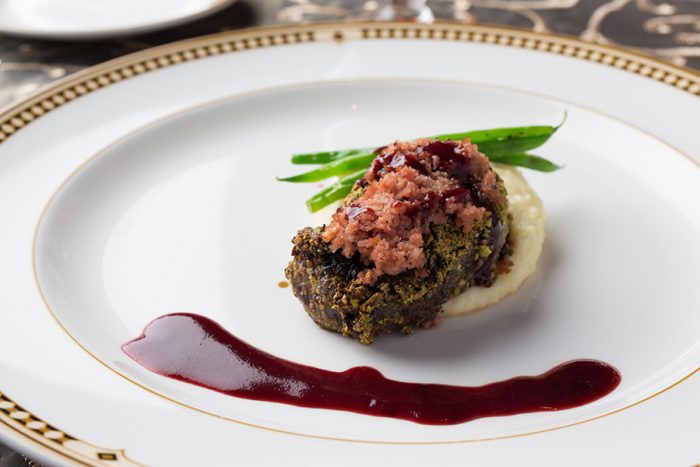
What started as chefs entertaining family and friends in their kitchen as they cooked became a luxury for restaurant patrons. The chef’s table went from a VIP-based event to something that anyone could reserve. Today, the parameters of chef’s tables and the number of courses and guests served at each one can vary from venue to venue. However, chefs around the globe tend to agree that a chef’s table should be in the kitchen, so that guests can acquire a complete experience, with a team of chefs. And, of course, it will always be music to a chef’s ears when guests agree to succumb completely to his team’s ideas — meaning no meal is off limits, and guests are not notified of the meal that they will eat until the plate appears before them.
And after many a chef’s table, Chef Rick of Golden Ocala has his own version of this age-old practice down to a science. If nine to 14 members request a chef’s table, he invites them into his kitchen where they sit atop bar stools and obtain a history lesson on each course – ranging from where each ingredient was found, to how each meal is prepared, cooked and plated, before learning how to eat each meal in a way that aligns with the chef’s vision for selecting those very ingredients. The preparation and cooking processes are what is called a demo — during which guests can observe how Chef Rick orchestrates his kitchen, as well as the body language among team members.
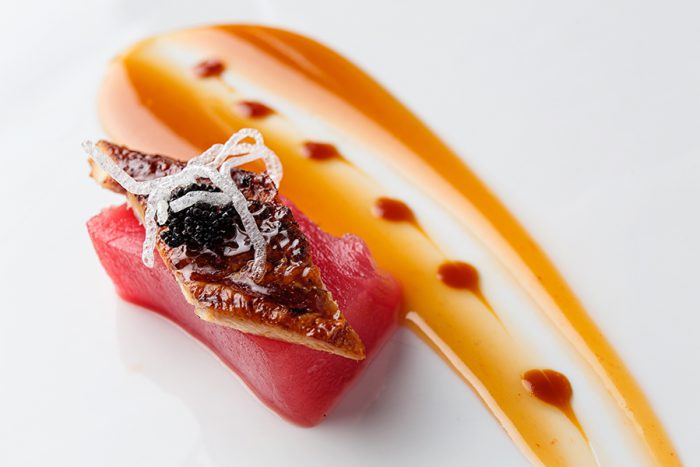 Chef Rick usually serves no fewer than four to five courses and no more than seven at his chef’s table – with a few bites per course. This allows for a balance of flavors, called on by introducing cheese first and previewing dessert with baby greens, such as red oak, spinach, radicchio or arugula. Ultimately, no one at the chef’s table should be too full to finish and should walk away feeling satisfied, not bloated.
Chef Rick usually serves no fewer than four to five courses and no more than seven at his chef’s table – with a few bites per course. This allows for a balance of flavors, called on by introducing cheese first and previewing dessert with baby greens, such as red oak, spinach, radicchio or arugula. Ultimately, no one at the chef’s table should be too full to finish and should walk away feeling satisfied, not bloated.
But the official amount of courses served depends largely on the guests’ request, which is why Chef Rick always asks for some parameters, even when guests consent to anything and everything. He finds people tend to have at least some preferences that they had not previously considered and that can help him narrow items down and sketch a tasty menu.
Chef’s Table in the Dining Room
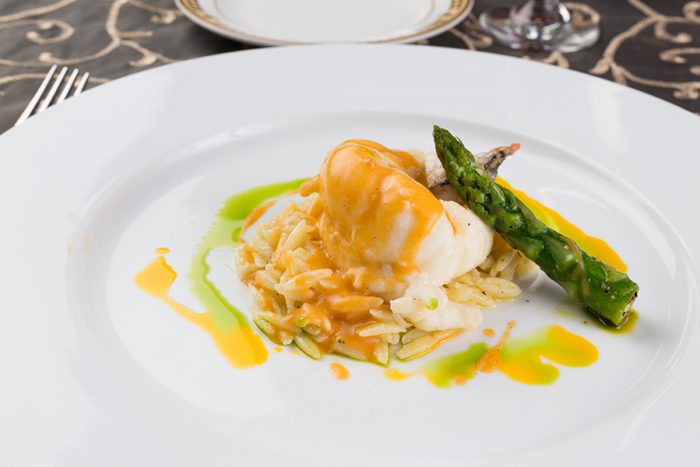
Oftentimes, 30 to 50 members request a chef’s table at Golden Ocala. In this case, Chef Rick seats the group in the dining room — except on a Friday or Saturday night, when it’s too crowded to properly accommodate this type of event. If what is called a chef-style chef’s table happens to occur on a night during which the dining room is half full, guests can actually observe two situations at once — the chef’s table experience and the kitchen staff as they serve other members. So, Chef Rick notes that nothing about the chef’s table in the dining room diminishes the food or food experience — but guests are unable to observe kitchen staff orchestration or technique.
Wine Dinners Vs. Chef’s Tables
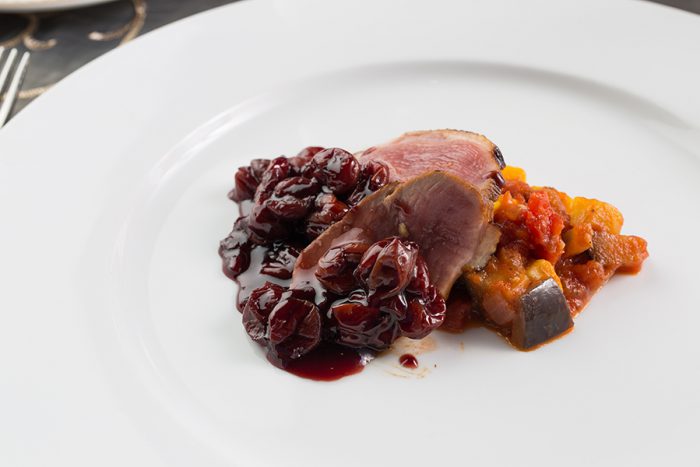 Educating members about the meal on their plate and how to capitalize on its flavor is about the only element that bonds wine dinners and chef’s tables. A wine dinner is matched by food and wine characteristics, while a chef’s table dinner is selected based on the chef’s desire to try unique concepts or follow the theme that the guests have specified. Basically, you can drink anything you want with your chef’s table meal, unless of course, you happen to have reserved a red or white wine with your respective courses.
Educating members about the meal on their plate and how to capitalize on its flavor is about the only element that bonds wine dinners and chef’s tables. A wine dinner is matched by food and wine characteristics, while a chef’s table dinner is selected based on the chef’s desire to try unique concepts or follow the theme that the guests have specified. Basically, you can drink anything you want with your chef’s table meal, unless of course, you happen to have reserved a red or white wine with your respective courses.
Both wine dinners and chef’s tables give Chef Rick the opportunity to showcase his talent — with one being on a smaller scale than the other. But the chef’s table will always hold a special place in his heart, because it means channeling those before him who defined the culinary arts in ways that were never previously thought possible.
So, if you’re interested in interacting with Chef Rick and his team outside of their seasonal menus and trying meals you never knew could become your favorites, call (352) 629-6229.